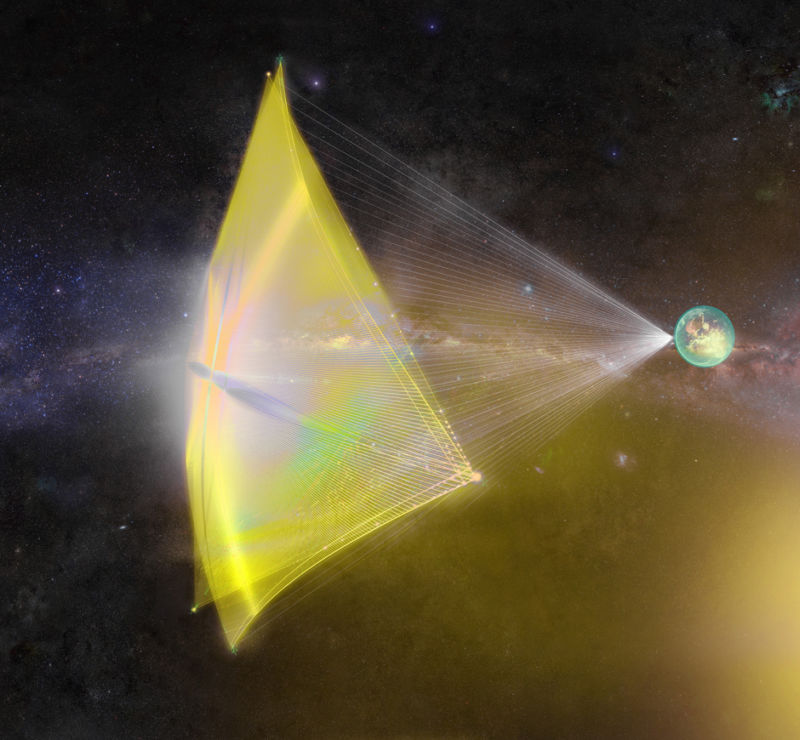The material science of building a light sail to take us to Alpha Centauri
Ars Technica » Scientific Method 2018-05-07

Enlarge (credit: Breakthrough Initiative)
It has been about two years since Yuri Milner announced his most audacious piece of science-focused philanthropy: Breakthrough Starshot, an attempt to send hardware to Alpha Centauri by mid-century. Although the technology involved is a reasonable extrapolation of things we already know how to make, being able to create materials and technology that create that extrapolation is a serious challenge. So much of Breakthrough Starshot's early funding has gone to figuring out what improvements on current technology are needed.
Perhaps the least well-understood developments we need come in the form of the light sail that will be needed to accelerate the starshots to 20 percent of the speed of light. We've only put two examples of light-driven sails into space, and they aren't anything close to what is necessary for Breakthrough Starshot. So, in this week's edition of Nature Materials, a team of Caltech scientists looks at what we'd need to do to go from those examples to something capable of interstellar travel.
The size of the problem
One of our best examples of a light sail was put into space on the IKAROS craft, which was capable of accelerating up to speeds of 400 meters/second. Breakthrough Starshot's craft are expected to travel in the area of 60,000 kilometers/second and accelerate to that speed before leaving the Solar System. So the amount we can learn from the existing craft is fairly limited.